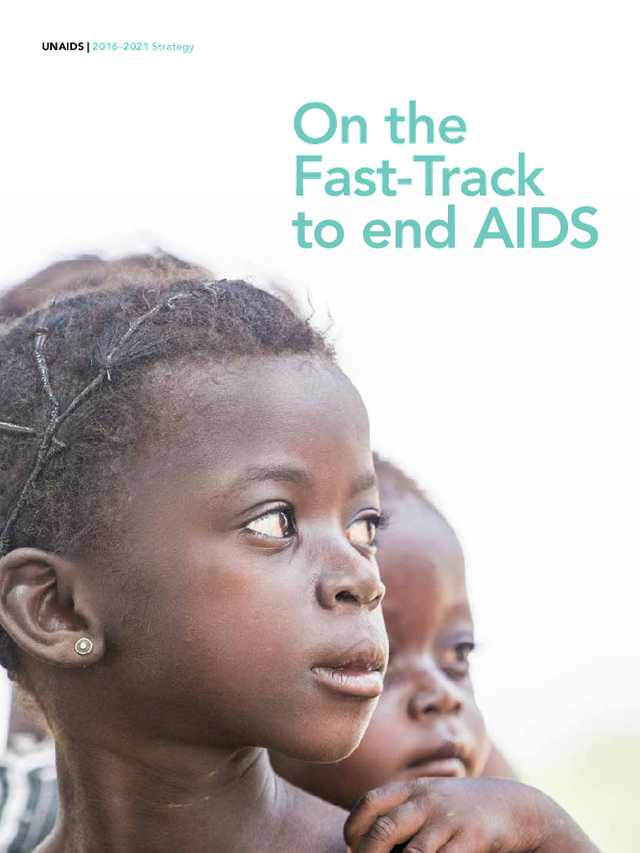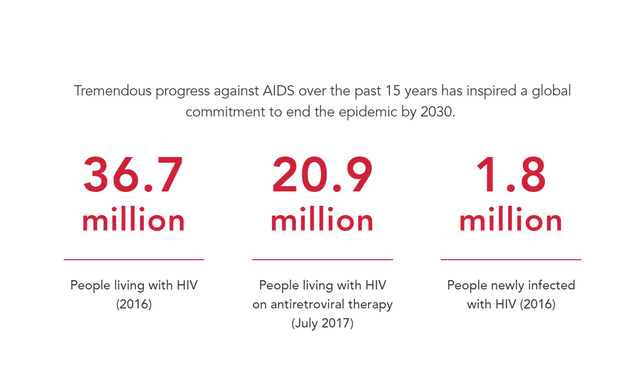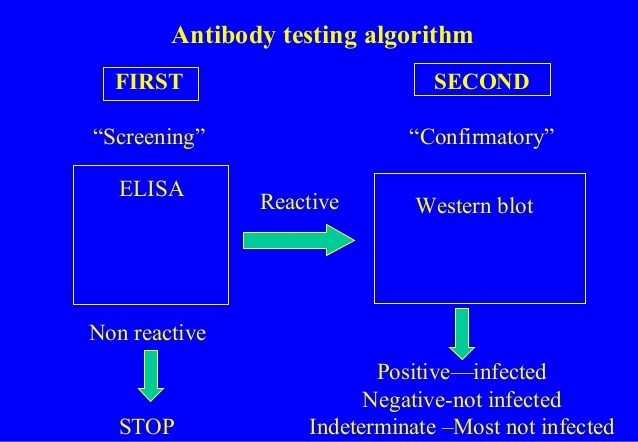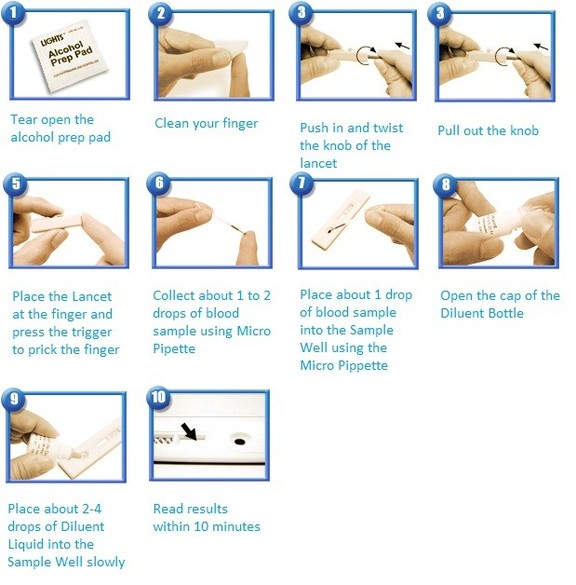AIDS / HIV TESTING

I stopped at prevention in my previous post and we will resume today, through testing.

HIV testing
We, Heads of State and Government and representatives of States and Governments assembled at the United Nations from 8 to 10 June 2016, reaffirm our commitment to end the AIDS epidemic by 2030 as our legacy to present and future generations, to accelerate and scale up the fight against HIV and end AIDS to reach this target, [...]
Source United Nations
Testing is the only way to make a diagnosis of HIV status (which I mentioned in my first post on AIDS) and, if necessary, to set up a treatment. And as we will see later, it is very important that it be put in place very early.
The fundamental notion of testing is incubation time.
The fundamental notion of screening is incubation time.
This is the time between infection (contact with the virus) and the first symptoms.
For HIV, therefore, it is necessary to wait approximately six weeks for the laboratory blood test and twelve weeks for the "rapid" tests.
Obviously, during this incubation period, the infected person can infect his or her partners and is not yet aware of his or her status.
1 Blood test
This fourth generation ELISA test is carried out as a first-line test, and the Western Blot test is carried out in the event of a positive ELISA result.
The ELISA test is not only used for HIV serology but has multiple applications.
For HIV, it is usually carried out six weeks after risky behaviour, contact with potentially contaminated blood, etc.
The Western Blot test, if it is to be performed, will be done on the same blood sample.
I won't go into more detail about the techniques and principles of the ELISA and Western Blot tests, but I will give you this diagram which summarizes the procedures very well without going into details.

Viral load can also be investigated.
I've already explained this concept to you (viral load), but I just wanted to say that it is very important at the beginning of contamination.
Indeed, the earlier the screening and tri-therapy is done, the lower the viral load that indicates your HIV status will be.
Viral load remains one of the criteria for morbidity.
Where to do it?
It may be done at many hospitals, medical clinics, community health centers, AIDS service organizations, and private laboratories.
2 HIV Self-testing
Originally created to provide access to screening for populations that do not have access to blood testing, it is now used by a much larger group than the target population.
It is in their interest to contribute to the objectives that are set by the United Nations mentioned above.
For example, it has been marketed in France and England since 2015, in Vietnam since 2016, in the United States since 2012...
Where to do it?
You can find them in pharmacies or on the Internet directly from manufacturers, where you should be careful to check the CE standard.
It costs about 30 €.
Based on the same principle as a home pregnancy test, this procedure makes it possible, after collecting a blood or fluid sample, to carry out the test and obtain the result after ten to thirty minutes, depending on the tests.
It is therefore carried out without assistance but it may be desirable to contact associations for telephone assistance.
It is difficult to imagine the situation that reading such a test alone in one's own home can lead to without the help of a health care staff to "cushion" the shock, inform, orientate and take charge.
According to the WHO,
Key evidence has found that HIVST, when compared to standard HIV testing:
• More than doubles uptake of HIV testing among men who have sex with men and male partners of
pregnant or post-partum women.
• Increases uptake of couples HIV testing among male partners of pregnant or post-partum women. [...]
3 Rapid HIV tests
Like the self-testing, it aims to make screening accessible to as many people as possible.
There are now a variety of different rapid tests. Most test for HIV antibodies by taking a prick of blood from your finger. These tests are only accurate three months after exposure. Rapid tests give results in just twenty minutes, so results can now be given on the spot at many healthcare centres.
If this test is positive, a blood test should be done.
4 Notification of partners
Advocated by WHO, as part of a guidance note published in December 2016, partner notification is intended to help, assist, encourage, and insist that newly diagnosed patients inform their sexual or drug addiction partner(s) of their possible contamination and, in fact, encourage testing and control of the spread of HIV.
Several tools and means are at their disposal, ranging from passive notification where the patient informs himself/herself, to assisted notification where a qualified third party intervenes in different ways.
5 How often are they tested and who is involved?
In France, according to the health authority, the recommendations made to health professionals in 2017 are as follows:
Priority should be given to testing key populations for HIV infection. The frequency of screening in these populations should therefore be increased:
- every three months with MSM;
- every year in IDUs;
- HIV infection, particularly in sub-Saharan Africa and the Caribbean.
In order to enable the diagnosis of people who do not know their HIV status and to reduce the hidden epidemic, the proposal to test for HIV infection at least once in life between the ages of 15 and 70 must be maintained and represents a complementary approach to testing within key populations. [...]
In addition, testing for HIV infection must be systematically offered in different circumstances: diagnosis of STIs, hepatitis B or C, diagnosis of tuberculosis, pregnancy or pregnancy project, rape, prescription of contraception or abortion, incarceration. [...]
Individual and voluntary approaches to HIV testing should continue to be encouraged and facilitated.
IDUs (Injection Drug Users)
MSM (Men who have Sex with Men)
Source: freely reusable public information.
I conclude with these two sentences which seem to me fundamental to understand and integrate in 2017:
- we don't die of HIV but we die of AIDS, hence the importance of screening and early diagnosis;
- AIDS is no longer considered to be a lethal but chronic disease if triple therapy is introduced early enough.
Pictures source:
Available on each image by clicking on it.
For more information:

The progresses are huge here. Hopefully, we will be able to get rid of this disease during our lifetime!
Thank you very much ! :-)
Congratulations! This post has been upvoted from the communal account, @minnowsupport, by Corsica from the Minnow Support Project. It's a witness project run by aggroed, ausbitbank, teamsteem, theprophet0, someguy123, neoxian, followbtcnews/crimsonclad, and netuoso. The goal is to help Steemit grow by supporting Minnows and creating a social network. Please find us in the Peace, Abundance, and Liberty Network (PALnet) Discord Channel. It's a completely public and open space to all members of the Steemit community who voluntarily choose to be there.
If you would like to delegate to the Minnow Support Project you can do so by clicking on the following links: 50SP, 100SP, 250SP, 500SP, 1000SP, 5000SP. Be sure to leave at least 50SP undelegated on your account.